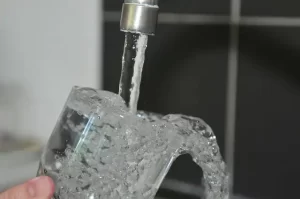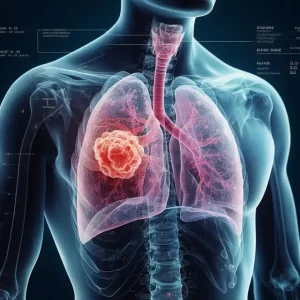COVID-19 Vaccines: Glass Containers in Shortage
COVID-19 Vaccines: Glass Containers in Shortage
COVID-19 Vaccines: Glass Containers in Shortage. Global panic buying “vaccine bottles”! The small glass bottle becomes a big bottleneck for the advent of the COVID-19 vaccine! Vaccine transportation is also welcoming the big challenge.
As COVID-19 vaccineS developed by multinational pharmaceutical companies have entered the later stage of testing, countries have begun to prepare vaccination plans. However, the successful development of vaccines is only the first step in the long march. One dose of vaccine, from the laboratory to the final human vaccination, will face many challenges. Even if the problems of R&D and mass production are solved, the problems of the upstream and downstream industrial chains that are closely related to them cannot be ignored.

British reporter: Don’t underestimate the challenges here. This requires coordination between multiple different supply chains, not only vaccines, but also glass bottles, rubber stoppers, and paper labels. If any of these links goes wrong, the final vaccine Products will be delayed.
In fact, when the COVID-19 vaccine is about to be mass-produced, there are signs of shortage of glass bottles containing the vaccine. Vaccines are chemical agents. Once they react chemically with the glass bottles, they will be contaminated and pose safety hazards. Therefore, the glass bottles used for vaccines are not ordinary glass bottles, but medium borosilicate glass bottles, which have stable chemical properties, water and acid resistance. The United States, Europe and other countries have mandated the use of medium borosilicate glass for all injection preparations and biological preparations. some countries’s medical glass products are currently transitioning from mainly soda lime glass and low borosilicate glass to medium borosilicate glass. As of the end of July, China has approved seven COVID-19 vaccines that have entered the clinical stage, and the vaccine vials are all made of medium borosilicate glass.
Zhang Wenhong, director of the Department of Infectious Diseases, Huashan Hospital Affiliated to Fudan University, Shanghai: The production of vaccine glass bottles is more difficult than vaccines. The glass bottles must first have enough glass and there are enough manufacturers.
Cold chain transportation is difficult, the COVID-19 vaccine faces a big test of temperature control
Some analysts predict that if each person is vaccinated 3 times, when the global penetration rate of the COVID-19 vaccine reaches 20%, 5 billion vaccine vials will be needed, and when the global penetration rate reaches 70%, nearly 16 billion vaccine vials will be needed. Globally, almost all biomedical companies involved in the development of the COVID-19 vaccine are lining up to buy vaccine vials. Public information shows that only one Johnson & Johnson company has purchased 250 million vaccine vials.
Vaccines are extremely sensitive to temperature. A WHO study estimates that up to 50% of vaccines worldwide are wasted every year. This is largely due to the lack of temperature control and complete cold chain logistics. At present, the two fast-moving companies, Pfizer and Moderna, are developing mRNA, the messenger ribonucleic acid vaccine.
There are strict requirements on temperature conditions. Pfizer’s vaccine must be kept at minus 70 degrees Celsius. At present, in the absence of sufficient ultra-cold and low-temperature freezer facilities, a large amount of dry ice has become an alternative. Pfizer has developed a special incubator that uses dry ice to store vaccines for 10 days.
In Massachusetts, USA, Mark and his team are stepping up production of dry ice for vaccine manufacturers. During the COVID-19 pneumonia epidemic, the demand for gasoline in the United States fell, and some ethanol ctories that produced carbon dioxide as a by-product were forced to close, resulting in a carbon dioxide shortage in the United States.
The tricky thing is that in international cargo transportation, dry ice is classified as a dangerous product. Lufthansa of Germany warned that dry ice reduces the ability of aircraft to transport vaccines. The amount of dry ice stored on the aircraft is limited, generally within 500 to 1,000 kg.
In order for the vaccine to be processed on a large scale, safely transported and quickly distributed, the air cargo capacity cannot be delayed. IATA CEO Juniak called it the “mission of the century” for the global air cargo industry. According to IATA estimates, if one dose of the COVID-19 vaccine is used for each of the 7.5 billion people in the world, 8,000 flights are required The Boeing 747 freighter can act immediately to meet the capacity.
In addition, some countries have relatively backward infrastructure and sanitation. How to ensure the safe transportation and vaccination of vaccines is also a difficult problem.
Professor Toby Peters, University of Birmingham, UK: You will find that in some regions and countries, 30% to 40% of medical centers may not have electricity. In some countries, less than 10% of medical centers may be equipped with normal Refrigerator in operation.
COVID-19 vaccine has not yet been launched
Even if the above-mentioned problems are solved, the vaccine will ultimately face every vaccinator. According to the latest poll, compared with August, the willingness of people in 15 countries to get the COVID-19 vaccine has dropped by an average of 4 percentage points, while no more than 50% of Americans are willing to vaccinate.
Eliminate people’s doubts about vaccination and solve the “last mile” problem
You must know that only when enough people are vaccinated, the COVID-19 vaccine can really help people resist the virus, which means that the last person to vaccinate is more important than the first person to vaccinate.
How to eliminate people’s resistance to the COVID-19 vaccine may become the “last mile” on the journey of defeating the COVID-19 virus.




